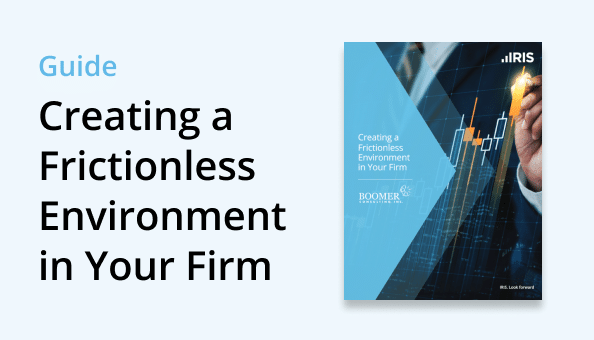BLOGS
Paid Time Off: Everything Small Businesses Should Know

Outside of health insurance, few benefits are as common in the American workplace as Time Off policies. Often called “leave,” this benefit allows employees to take time away from work, whether for personal, health, or other reasons. In all cases, PTO ensures employees can take necessary leave without financial burden.
While commonly seen by many as a costly expense with little benefit, companies would be foolish to dismiss PTO as simply paying employees not to work. Instead, paid leave can be utilized to increase productivity, improve employee retention, and attract better talent.
In this article we will explore what PTO is, the types of paid leave, and the different packages companies can offer.
What is Paid Time Off?
Paid Time Off (PTO) is a payroll policy in which employees are compensated for time away from work. An all-encompassing term, paid leave can apply to time off for any purpose, including personal time, vacation, sickness, bereavement, and more.
How PTO packages are structured will differ by each business, as they are largely dependent on a combination of preference, industry standards, and state regulations. Regardless of their set up, however, paid leave can be used as a valuable asset for companies.
Among other benefits, PTO helps improve productivity and reduce unplanned absences by giving employees more flexibility over their time. Additionally, paid leave helps improve employee retention, as it helps provide necessary work-life balance.
Types of Paid Time Off
While companies are trending towards defining all paid leave as simply “Paid Time Off,” many still choose to categorize leave into specific types. These categories are created to better manage the use of PTO in an organization, as well as improve payroll processes.
Common types of PTO include:
Holidays
In the US workplace, “holidays” are specified days that the entire organization observes as a day off from work. On these days, employees receive compensation for their time off.
While the majority of private-owned companies are not required to recognize holidays, most still recognize major local, state, and national celebrations. Many private companies observe the following national holidays:
- New Year’s Day
- Birthday of Martin Luther King Jr.
- President’s Day
- Memorial Day
- Juneteenth National Independence Day
- Independence Day
- Labor Day
- Columbus Day/Indigenous People’s Day
- Veterans Day
- Thanksgiving Day
- Christmas Day
Determined by the federal government, dates of observation can fluctuate year by year, depending on the holiday.
In addition to local, state, and federal holidays, private companies can observe any other day they want. Examples include religious holidays like Yom Kippur, as well as culturally significant days like Black Friday. Realistically, however, companies can make any day an observable holiday – including a solar eclipse.
Paid Sick Leave
Paid Sick Leave is compensated time off for employees to use when they experience health-related issues.
Typically, sick days are used for short-term personal medical care, such as illness, injury, or minor surgeries. It is also common for caregivers to use their sick leave when their dependents have short-term health problems.

The amount of paid leave an employee receives is dependent on their employer’s policies.
The Family and Medical Leave Act of 1993 (“FMLA”), however, does require employers with more than 50 employees to provide 12 weeks of unpaid leave for long-term medical issues, including injury or illness. There is no federal law guaranteeing compensation for extended medical leave.
As of 2022, however, nine states and the District of Columbia have state-sponsored Paid Family and Medical Leave policies: California, Colorado, Connecticut, Massachusetts, New Jersey, New York, Oregon, Rhode Island, and Washington.
Paid Family Leave
Paid Family Leave is compensated time away from the workplace for significant caregiving needs. Typically, family leave is used after the arrival of a new child (adoption or birth), serious illness of a family member, and other significant, long-term health crises.
Generally, paid family leave is not used for minor illnesses, day-to-day needs, and preventative care.
While federal law guarantees employees unpaid time off for family emergencies, there are currently no national laws that ensure paid leave. As of 2022, only nine states have state-run family leave programs:
- California
- Colorado
- Connecticut
- Massachusetts
- New Jersey
- New York
- Oregon
- Rhode Island
- Washington
The District of Columbia also has Paid Family and Medical Leave policies.
Paid Bereavement Leave
Paid Bereavement Leave is compensated time given to employees after the death of another individually, typically a close relative or someone of significant importance.
This paid time off allows employees to take time to organize post-death arrangements, attend funerals, grieve privately, and more. While most organizations recognize the importance of Paid Bereavement Leave, policies will differ by company.
Currently there are no federal laws guaranteeing unpaid or paid bereavement leave in the United States. Only one state requires paid bereavement leave: Oregon.
Paid Leave for Jury Duty
In order to allocate time for employees exercising their civic duties, companies will often define “jury duty” as a type of leave.
Because it is federally mandated, all companies must offer some form of leave for jury duty. However, on the federal level there are no requirements for paid leave – meaning some employers simply offer unpaid time off.
There are eight states that require paid leave for jury duty. Those states are:
- Alabama
- Colorado
- Connecticut
- Louisiana
- Massachusetts
- Nebraska
- New York
- Tennessee
Family and Medical Leave Act
Unlike the previously listed options, Family and Medical Leave is not a voluntary option.
According to the Family and Medical Leave Act (FMLA), businesses that employ 50 or more people are required to provide at least twelve weeks of unpaid leave for their employees – all of which is job-protected. This policy provides guaranteed time off for reasons, such as to care for a sick family member and the birth or adoption of a child.
FMLA-related leave is separate from a business’s established time off policy. As a result, when employees request time off that falls under the FMLA, businesses should review their policies and procedures to ensure they are in compliance with federal regulations.
Types of PTO Packages
Outside of local, state, and federal standards, businesses can create any kind of paid time off package that they want. Even so, these endless options can be simplified down to three different types. These frameworks are largely customizable, meaning companies can tailor their packages towards their preferences.
In this section we will explain the three main types of PTO policies.
PTO Accrual
The most traditional type of PTO package, accruals require employees to earn their paid leave.
In this system, employees earn paid leave by accruing hours of service – the more a laborer works, the more time off they accrue. Typically in this model, paid leave is reflected in hourly increments as opposed to “days off.”

Most companies that use PTO accrual packages set a maximum amount of leave that can be accumulated. It’s not uncommon to set minimum service requirements that employees must meet before they can accrue time off – similar to 90 day requirements for other benefits.
In order to implement a successful PTO Accrual system, employers should set clear policies that detail eligibility requirements, how leave is requested, how leave is approved, and how unused time is managed.
Businesses should also be aware of any local or state regulations. With many states having conditions that require some form of compensation for unused accrued time off, it is important to understand how local regulations impact your operation.
PTO Banks (Lump)
Bundles multiple PTO types together, PTO banks are the direct opposite of categorized time off packages.
With this time off strategy, businesses no longer distinguish between types of leave, instead “lumping” them all together. For example, sick leave and vacation leave in a lumped package would be combined, leaving employees with PTO that can apply to any of their needs.

Giving employees a block of PTO instead of categorized types is not only less complicated for payroll managers, but is more valuable for workers.
Take an employee who rarely gets sick, for example. Instead of losing unused sick leave at the end of year, that employee can instead use that time for vacations. Alternatively, a chronically ill employee can use their “vacation time” as sick leave.
No matter how they’re used, PTO banks give employees more control over their paid leave by reducing unnecessary restrictions.
Unlimited Paid Time Off
In the midst of The Great Resignation, no policy has gained as much popularity as unlimited PTO. Largely results-driven, this strategy has already grown particularly popular in startups and the technology industry.
Unlimited PTO is exactly what its name implies: instead of giving employees an allotted days for leave, workers receive no maximum. Unlike lump or accrual strategies, unlimited PTO empowers employees to take as much time off as necessary, as long as work is finished.

Cynics understandably would find unlimited PTO as an unsustainable concept, with many envisioning entire offices empty. Statistically speaking, however, there is little to support the notion that unlimited PTO impacts overall productivity. In fact, studies indicate that employees take less than 13 days off per year with unlimited packages.
This strategy offers employees more autonomy than any other type – a particularly valuable asset in a world that values work-life balance more than ever.
How We Help Manage Your PTO Policy
Regardless of which PTO strategy your business implements, your business will be required to reflect the policy in its payroll processes.
Combining software and concierge services, our solution streamlines the payroll process. Led by experts on all local, state, and federal policies and regulations, we help manage every part of your operation, including time and attendance, paid and unpaid leave, and more.
With PTO policies specifically, our human capital management platform will enable your company to easily track and manage your employees’ paid leave – regardless of if your policy is unlimited, lumped, or accrual-based.
Additionally, we provide our clients with direct access to federal and state laws regarding PTO, the FMLA, and more. Our expert team even provides a policy library, which our clients can use to develop their own PTO policies.
DISCLAIMER: The information provided herein does not constitute the provision of legal advice, tax advice, accounting services or professional consulting of any kind. The information provided herein should not be used as a substitute for consultation with professional legal, tax, accounting, or other professional advisers. Before making any decision or taking any action, you should consult a professional adviser who has been provided with all pertinent facts relevant to your particular situation and for your particular state(s) of operation.












